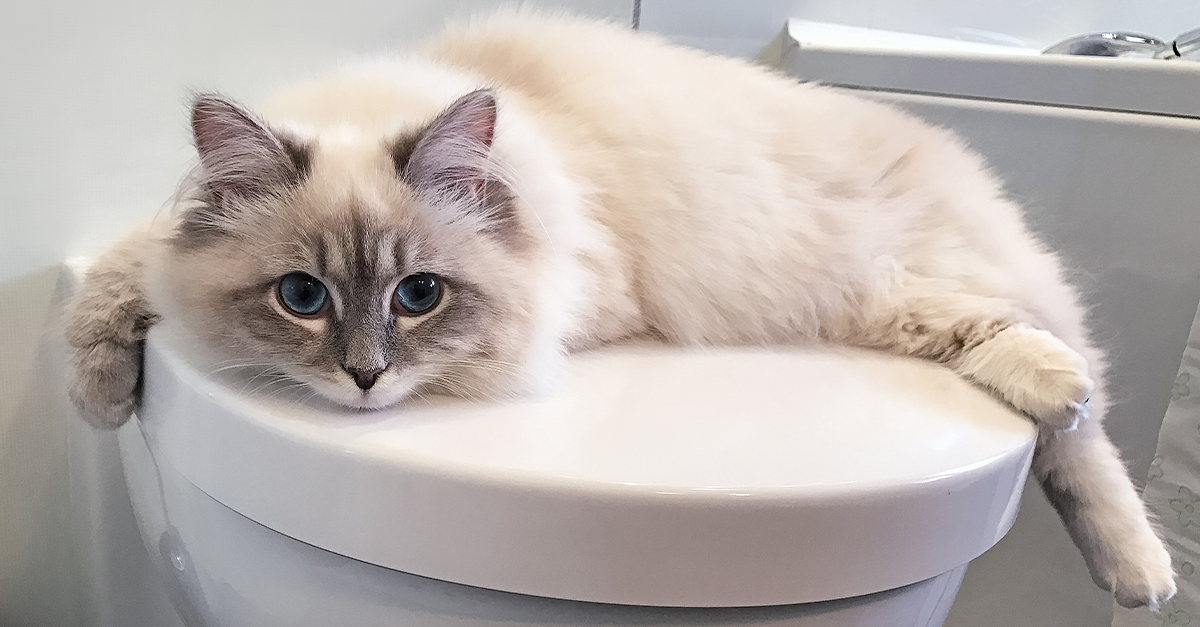Prevent Clogs and Damage: Never Flush Cat Poop Down Your Toilet - Professional Recommendations
Prevent Clogs and Damage: Never Flush Cat Poop Down Your Toilet - Professional Recommendations
Blog Article
Just how do you really feel when it comes to How to Dispose of Cat Poop and Litter Without Plastic Bags?

Introduction
As pet cat proprietors, it's vital to be mindful of how we take care of our feline friends' waste. While it might appear hassle-free to flush cat poop down the bathroom, this practice can have harmful effects for both the atmosphere and human wellness.
Alternatives to Flushing
Thankfully, there are much safer and more responsible ways to throw away pet cat poop. Take into consideration the following alternatives:
1. Scoop and Dispose in Trash
The most common method of getting rid of pet cat poop is to scoop it right into an eco-friendly bag and toss it in the garbage. Make certain to utilize a specialized trash inside story and take care of the waste promptly.
2. Use Biodegradable Litter
Opt for biodegradable pet cat clutter made from materials such as corn or wheat. These trashes are eco-friendly and can be securely thrown away in the garbage.
3. Hide in the Yard
If you have a lawn, consider hiding pet cat waste in an assigned area away from vegetable yards and water resources. Make sure to dig deep sufficient to prevent contamination of groundwater.
4. Install a Pet Waste Disposal System
Invest in an animal waste disposal system specifically made for pet cat waste. These systems utilize enzymes to break down the waste, decreasing odor and environmental influence.
Wellness Risks
Along with environmental concerns, purging pet cat waste can also present health risks to human beings. Feline feces may contain Toxoplasma gondii, a bloodsucker that can trigger toxoplasmosis-- a potentially extreme health problem, particularly for expectant women and people with weakened body immune systems.
Environmental Impact
Flushing cat poop introduces damaging microorganisms and parasites right into the water system, positioning a significant danger to water environments. These impurities can adversely impact aquatic life and compromise water high quality.
Verdict
Accountable pet ownership expands beyond providing food and sanctuary-- it likewise includes proper waste management. By avoiding purging feline poop down the toilet and choosing alternate disposal methods, we can reduce our environmental impact and safeguard human wellness.
Why Can’t I Flush Cat Poop?
It Spreads a Parasite
Cats are frequently infected with a parasite called toxoplasma gondii. The parasite causes an infection called toxoplasmosis. It is usually harmless to cats. The parasite only uses cat poop as a host for its eggs. Otherwise, the cat’s immune system usually keeps the infection at low enough levels to maintain its own health. But it does not stop the develop of eggs. These eggs are tiny and surprisingly tough. They may survive for a year before they begin to grow. But that’s the problem.
Our wastewater system is not designed to deal with toxoplasmosis eggs. Instead, most eggs will flush from your toilet into sewers and wastewater management plants. After the sewage is treated for many other harmful things in it, it is typically released into local rivers, lakes, or oceans. Here, the toxoplasmosis eggs can find new hosts, including starfish, crabs, otters, and many other wildlife. For many, this is a significant risk to their health. Toxoplasmosis can also end up infecting water sources that are important for agriculture, which means our deer, pigs, and sheep can get infected too.
Is There Risk to Humans?
There can be a risk to human life from flushing cat poop down the toilet. If you do so, the parasites from your cat’s poop can end up in shellfish, game animals, or livestock. If this meat is then served raw or undercooked, the people who eat it can get sick.
In fact, according to the CDC, 40 million people in the United States are infected with toxoplasma gondii. They get it from exposure to infected seafood, or from some kind of cat poop contamination, like drinking from a stream that is contaminated or touching anything that has come into contact with cat poop. That includes just cleaning a cat litter box.
Most people who get infected with these parasites will not develop any symptoms. However, for pregnant women or for those with compromised immune systems, the parasite can cause severe health problems.
How to Handle Cat Poop
The best way to handle cat poop is actually to clean the box more often. The eggs that the parasite sheds will not become active until one to five days after the cat poops. That means that if you clean daily, you’re much less likely to come into direct contact with infectious eggs.
That said, always dispose of cat poop in the garbage and not down the toilet. Wash your hands before and after you clean the litter box, and bring the bag of poop right outside to your garbage bins.
https://trenchlesssolutionsusa.com/why-cant-i-flush-cat-poop/

I recently found that review on How to Dispose of Cat Poop and Litter Without Plastic Bags while doing a lookup on the internet. In case you enjoyed our page if you please remember to pass it around. I love reading our article about Can You Flush Cat Poop Down The Toilet?.
Details Here Report this page